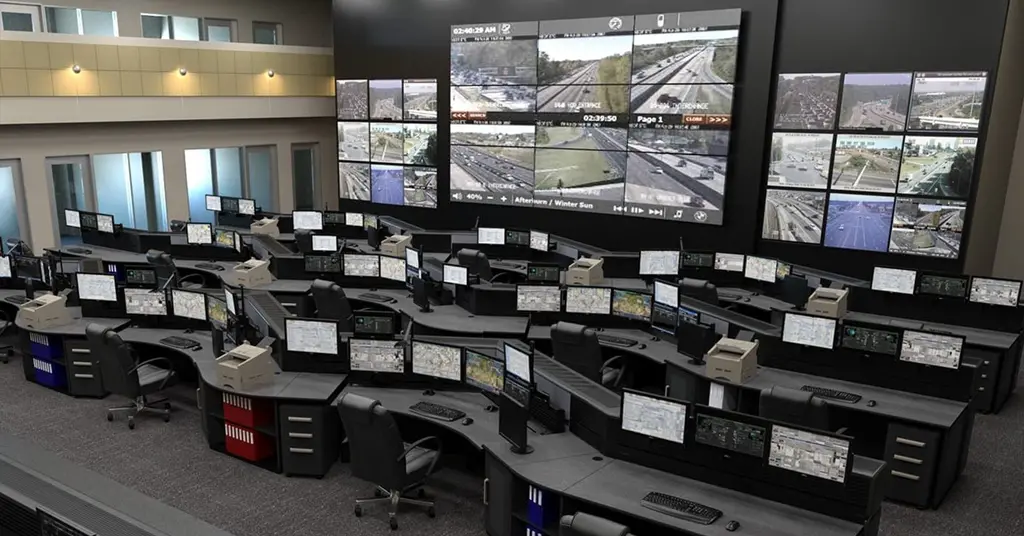How to Choose the Right Audio Visual Solution for Your Traffic Control Center?
The importance of audio-visual solutions to traffic control centers is self-evident, and more and more traffic control centers have deployed audio-visual integrated systems. The audio-visual integrated system can enable the traffic control center to play a huge role in monitoring and managing traffic flow, quickly handling traffic accidents, clearing traffic jams, and providing drivers and passengers with comprehensive traffic safety information.
The audio-visual solution is a comprehensive project involving a variety of hardware devices and software systems. It is difficult for non-professionals to distinguish what kind of audio-visual solution is suitable. In this article, we’ll explore how to choose the right audiovisual solution for your traffic control center. Content will cover key factors to consider when selecting an audiovisual solution for a traffic control center, as well as frequently asked questions to help you make an informed choice.
Table of Contents

Purpose and requirements for choosing an audiovisual solution
Before purchasing an audiovisual solution, you need to determine your purchasing purpose and functional requirements. What is the purpose of procuring solutions in traffic control? Is it for real-time monitoring of road traffic or early warning of vehicle congestion? How to communicate with existing hardware equipment and systems after deploying audio-visual solutions? Only when the purpose and requirements of procurement are clarified can correct decisions be made for the subsequent procurement process.
Is the system scalable
The development of road traffic is getting faster and faster, which makes the data that the traffic control center needs to process more and more huge. So when you choose the audio-visual solution of the traffic control center, you need to consider the later scalability to deal with the increasingly huge traffic data.
These scalability include external device system and software compatibility. For example, can the audio-visual system be plugged into more monitors and cameras and speakers? Can the software system be upgraded iteratively or expand the database?
System Reliability and Security
The traffic control center needs to monitor and analyze the road traffic conditions 24 hours a day, so the reliability of the audio-visual solution is very important. It must ensure that the probability of downtime is extremely small, otherwise it will directly affect the traffic control center’s monitoring and management of road traffic conditions.
In addition, the system must have a safe operating environment. Just imagine the horrific scene when hackers break into a traffic control center and change traffic lights at will. Audiovisual solutions must have the ability to prevent unauthorized data access and intrusion into system databases from outside.
Compatibility and Integration
Before you deploy an audio visual solution, traffic control centers obviously already have relevant road traffic monitoring equipment. If these devices and systems can be connected to a new audio-visual integrated system, it will obviously save you a lot of money. For example, cameras all over the road and LED screens used to prompt road traffic information and so on.
When choosing an audiovisual solution, fully considering the compatibility of existing equipment and systems can make old equipment more efficient and can also ensure fast communication with emergency response departments (fire and medical) to protect the lives of drivers and passengers.
Ease of operation for audiovisual integration systems
The audiovisual solution must be easy to operate, and the relevant operators can quickly master all system functions. Just imagine the horror of being unable to contact emergency services in the event of an accident because the audiovisual integration system is difficult to operate.
The friendly audio-visual integrated system will integrate important functions into the operation panel, so that the traffic control personnel can quickly issue various traffic control instructions without making mistakes while busy with work.
FAQs
Not necessarily. It’s essential to choose a solution that meets your specific requirements and budget. While the latest technologies may offer some advantages, they may not be necessary for your particular situation.
Yes, most audio visual solutions are designed to integrate with other systems, including traffic management software, weather monitoring, and emergency services.
Look for a solution that has appropriate security features, such as encryption, user authentication, and access control. Ensure that the system is regularly updated with security patches and software updates.
Conclusion
When choosing audiovisual solutions, the traffic control center must consider them comprehensively and carefully. Careful consideration should be given to the installation purpose of the audiovisual system, the scalability and compatibility of the system, and the operability of the audiovisual integrated system. In addition, technical issues such as the security of audio-visual solutions and the possibility of system upgrades in the later stages also need to be comprehensively measured. With the correct audiovisual solution, you can effectively improve traffic flow, quickly handle traffic accidents, and ensure the rapid and stable operation of the overall traffic.
Others also read the following article
Want to know more about the Audio Visual Solutions?
